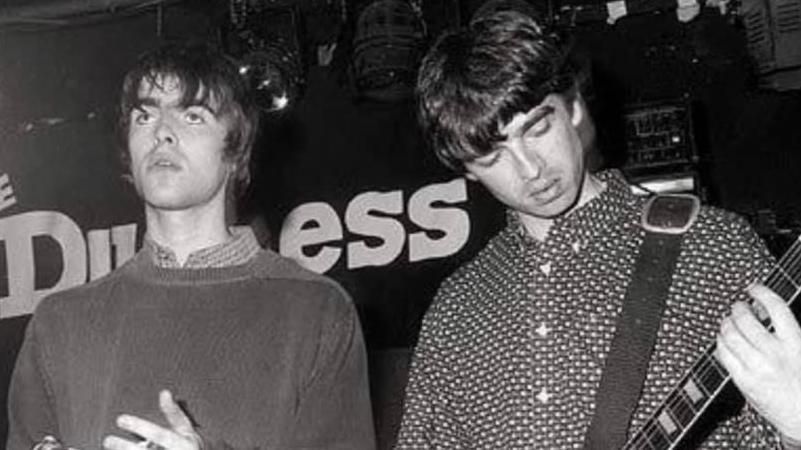Gig venue where pre-fame Oasis played is celebrated
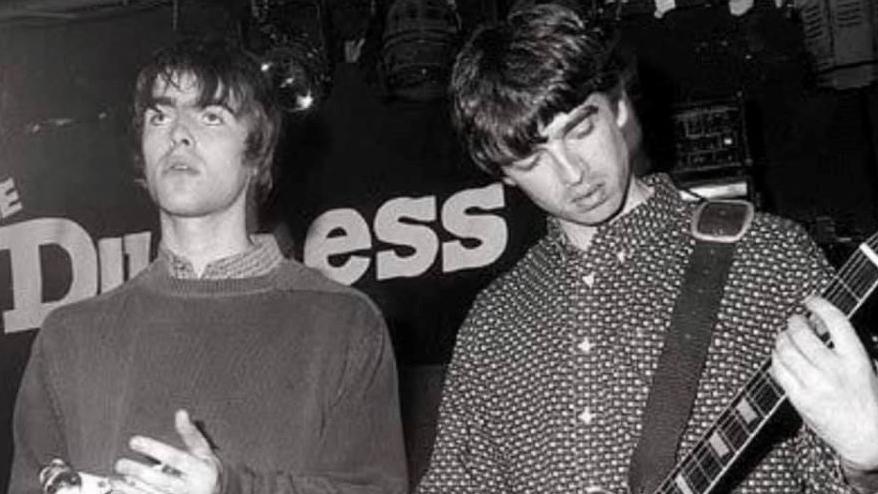
Oasis played to a largely empty room at their first gig at the Duchess of York pub in Leeds in 1993
- Published
It was the mainstay of the northern gig circuit for more than a decade and the place where Oasis famously played to two paying customers. Now, 25 years after its closure, the legacy of the Duchess of York pub in Leeds is being celebrated for its role in the city's music scene.
Behind the doors of 71 Vicar Lane - now a designer fashion store - are memories of some of the best nights in live music for regulars at the venue, known as The Duchess.
During the 1980s and 90s, the venue played host to countless acts who took to the stage before making it big.
Along with the Gallagher brothers, Nirvana, Blur, Pulp and Coldplay were among those brought to Leeds in their early days by promoter John Keenan, who was responsible for transforming the venue by putting on touring bands.
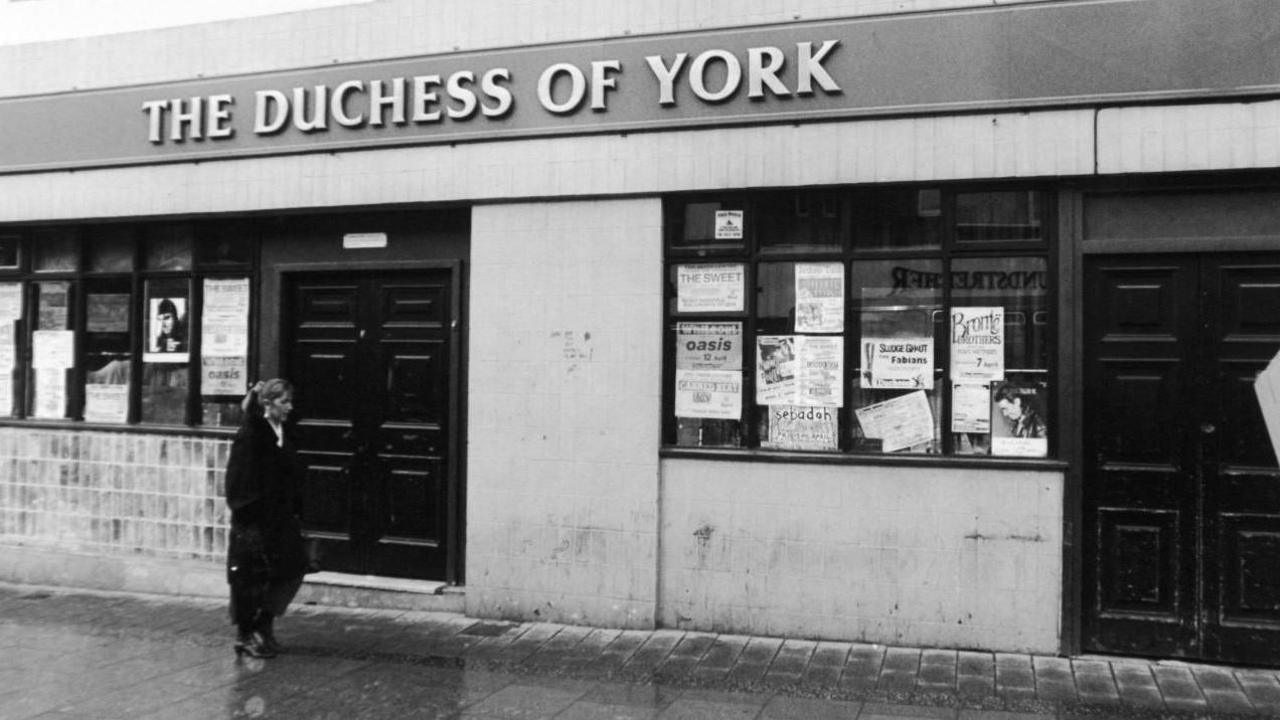
The pub opened in 1988 and closed in 2000 before it was redeveloped into a Hugo Boss store
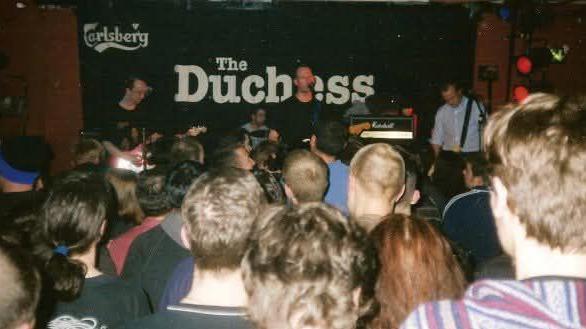
Rock band Half Man Half Biscuit were among countless acts to play at the Duchess
Keenan, who ran the Duchess for four years and promoted there for 13, recalls a "slightly surly Liam" and a more "level-headed Noel" when Oasis first played in the venue on 8 September 1993 - the same night as local band Elsie Moon.
"What I used to do was when I put a new band on, I'd try to put a local band on, too, so it would draw more people in," he said.
"At the time, I was being bombarded by this band called Elsie Moon who were saying, 'put us on', so I put them on supporting Oasis and they had pulled in a few fans.
Keenan adds: "I spent about an hour chatting to Noel and their manager Marcus Russell about what they could do to improve things."
Less than a year later, Oasis - who were now gaining popularity - returned to The Duchess for a second gig - this time arriving to a queue of hundreds snaking around the block and performing to a sell-out crowd.
Keenan recalls: "I knew they had something about them on that first night and they just grew in prominence in a really short period of time."
Promoting has been Keenan's life and he is credited with bringing some of the biggest names through The Duchess's doors.
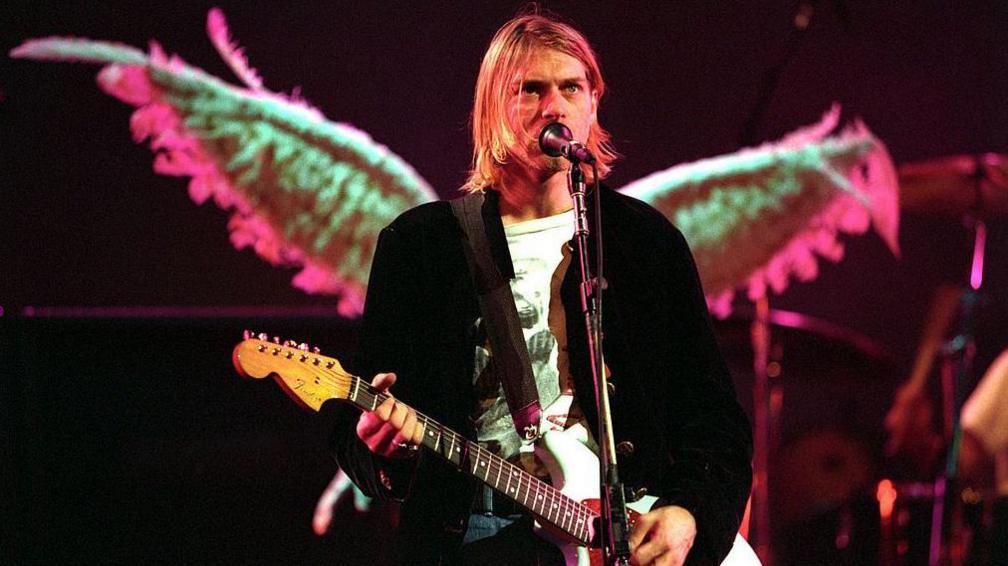
Nirvana, with lead singer and guitarist Kurt Cobain (pictured), was one of the best-selling bands of all time
Coming to The Duchess on 25 October 1989 was a then little-known band from Washington in the US called Nirvana.
With frontman Kurt Cobain, the band hit the stage in Leeds to promote their recently released debut album, Bleach.
They performed not as the main attraction but as a support act for another American rock band, Tad.
Keenan, now 77, remembers the night well: "It wasn't very busy and I was doing the lights.
"At the end of the set, Kurt got his guitar and smashed it on the floor and smashed the drum.
"Our sound guy grabbed Kurt and pinned him against the wall. He wasn't happy and swore at him quite a bit."
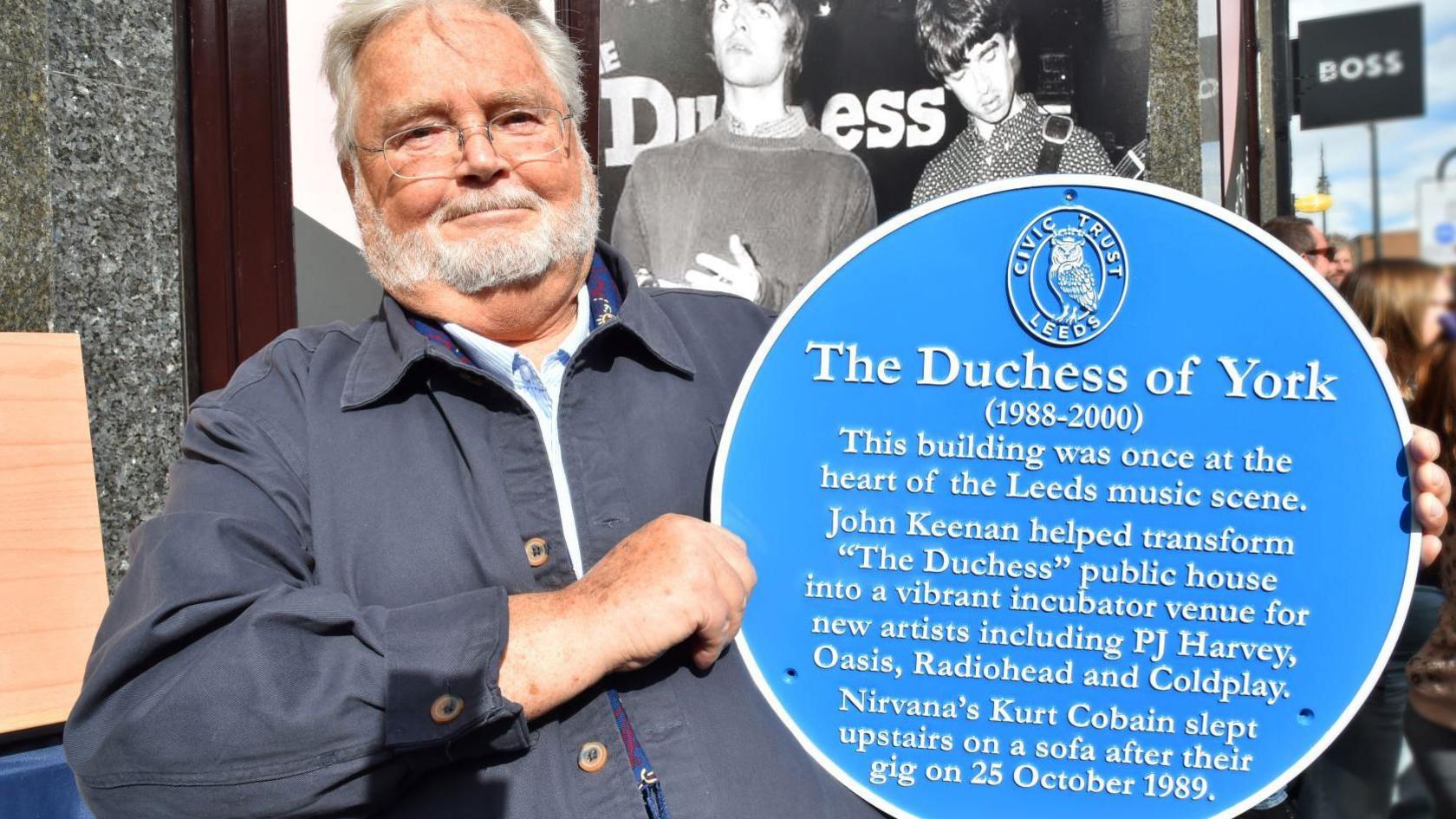
John Keenan unveiled a blue plaque last year to honour the pub's "significant contribution to the music industry"
Keenan recalls that what Cobain had done "was a trick that became part of his tours".
Smashing up his instrument became Cobain's signature move, and was an iconic part or Nirvana's history, with some of those battered instruments becoming collectibles.
After Nirvana had performed, both American bands crashed out upstairs and slept on sofas overnight.
Keenan says: "I remember no-one would sleep in the same room as Tad, though, because his snoring was so bad.
"It was quite a sight in the morning, to see this big lad asleep on a sofa in the office."
Two years after that Duchess gig, Nirvana released their second album, Nevermind, which propelled the band to stardom.
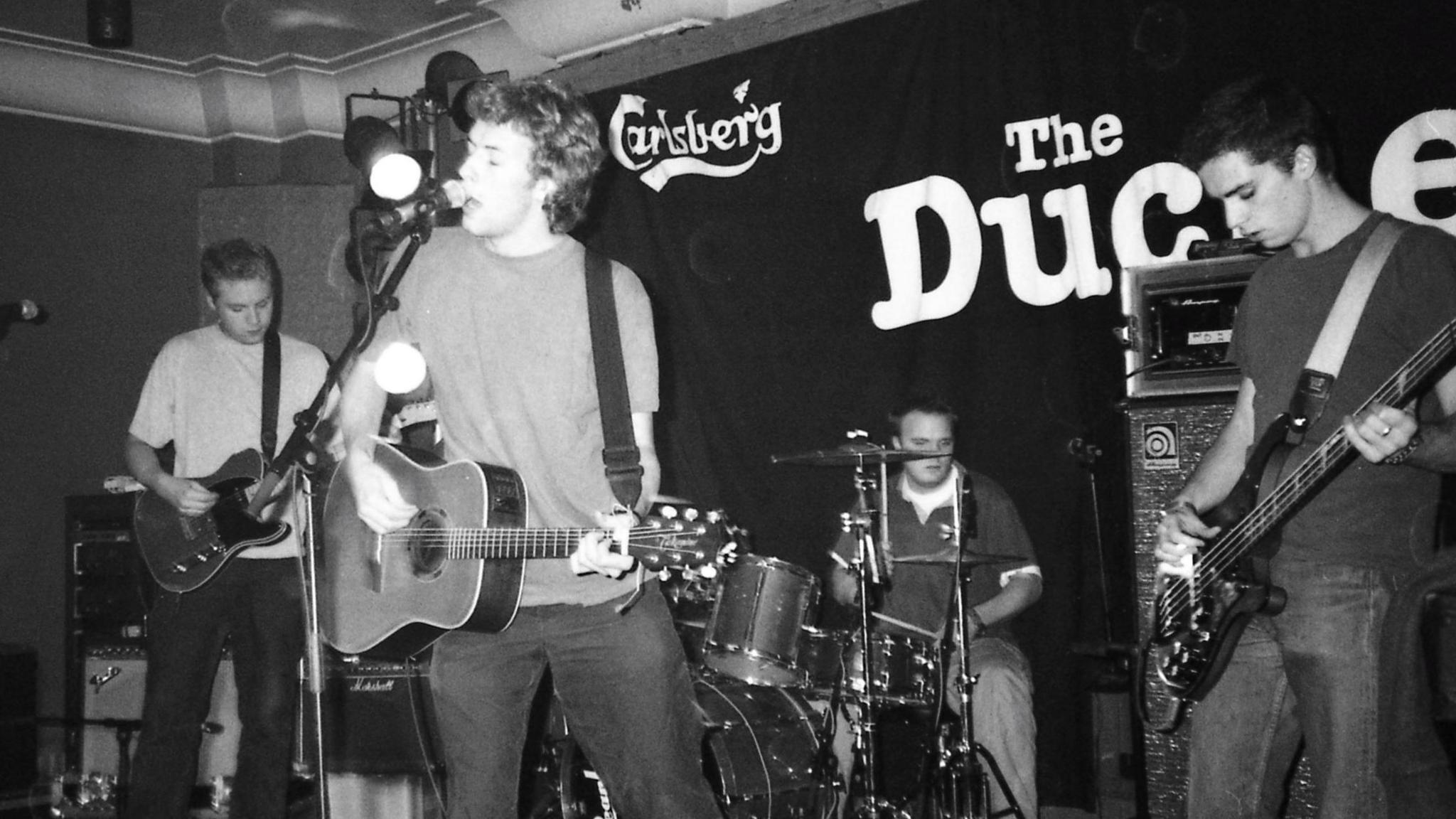
Coldplay was just one of the soon-to-be-big names that hit the stage at The Duchess
Keenan credits the success of the "old traditional 1930s pub" as a result of his efforts to cater for all musical tastes.
"What I did was structure it so everyone thought The Duchess was theirs," he explains.
"One night, there was folk music, another night was indie, then glam rock, and other nights we'd have indie pop and dirty rock.
"It wasn't just a venue dedicated to one trend of music, and the atmosphere was created by the people who attended the gigs."
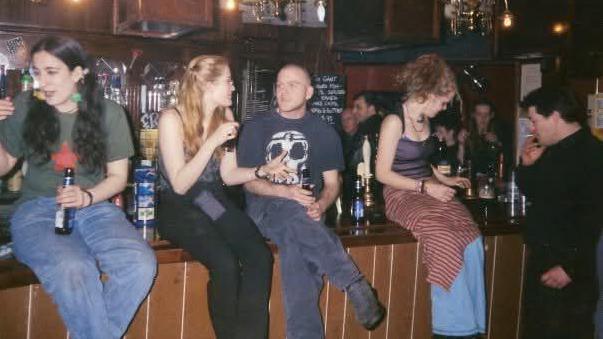
Bar staff at the Duchess on its last night of opening in March 2000
To celebrate the venue's part in the musical heritage of Leeds, the pub has now been partially recreated in an exhibition at Leeds City Museum which looks back at six decades of music in the city.
The exhibition traces other milestones, including the Futurama Festival in 1979, the rise of the Goth scene in the 1980s and looks at how the city has inspired artists.
Jez Willis, founder of Leeds dance band Utah Saints, credits the city with "giving me my start".
He says: "Leeds, for me as a musical person, has been pretty much everything.
"It gave me all my musical influences. I've met some inspiring people, musicians who would come before us and after us and the general vibrancy of the city."
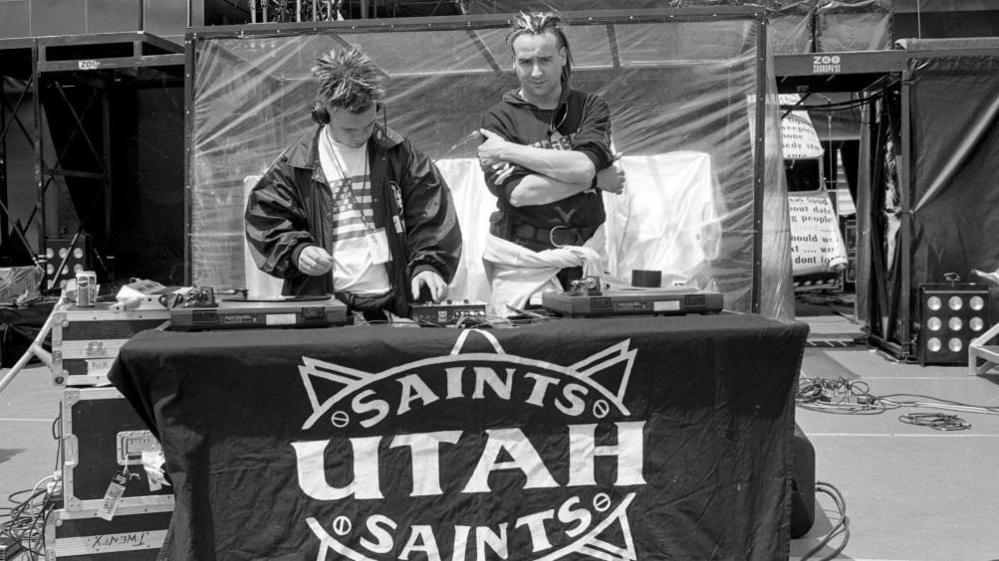
Utah Saints had three top 10 and another five top 40 singles on the UK singles chart in the 1990s
He adds: "In my life, if you take family out of it, I've had two main drivers: one of them has been music, and the other one has been Leeds.
"And if one has kind of let me down a bit or I've got a bit wobbly, the other one has kind of been there to steady things out."
While for many, The Duchess and its era represents the heyday of live music and upcoming talent, Willis remains optimistic the vibe still resonates in Leeds.
"It's constantly evolving, and the one thing the world needs now is ideas - and Leeds is such a creative city,
"I still think we're in a heyday, musically. There's lots of music flying about which is fantastic."
Get in touch
Tell us which stories we should cover in Yorkshire
Listen to highlights from West Yorkshire on BBC Sounds, catch up with the latest episode of Look North.
Related topics
- Published16 September 2024
